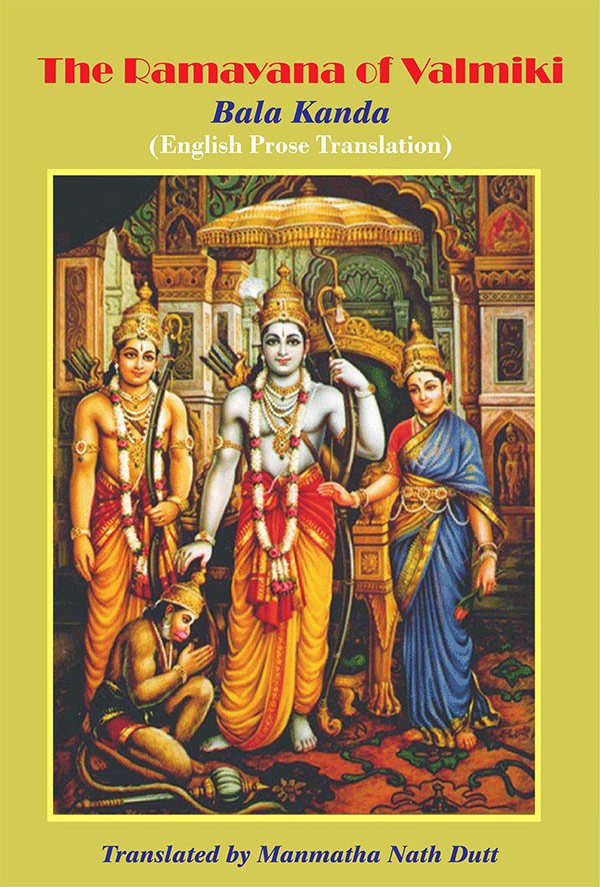Ramayana of Valmiki
by Hari Prasad Shastri | 1952 | 527,382 words | ISBN-10: 9333119590 | ISBN-13: 9789333119597
This page is entitled “king dasaratha’s kingdom and capital” and represents Chapter 5 of the Bala-kanda of the Ramayana (English translation by Hari Prasad Shastri). The Ramayana narrates the legend of Rama and Sita and her abduction by Ravana, the king of Lanka. It contains 24,000 verses divided into seven sections [viz., Bala-kanda].
Chapter 5 - King Dasaratha’s kingdom and capital
The earth consisting of seven islands has been under one ruler since the time of those kings descended from Manu, who were ever victorious.
Among those mighty monarchs was Sagara followed by his sixty thousand sons who hollowed out the ocean. This classic Ramayana contains the history of the House of Sagara, founded by Ikshvaku. This Rama-Katha will be recited from beginning to end—let all listen to it with faith.
On the banks of the river Sarayu, there was a great and prosperous country named Koshala, inhabited by contented people. In it was the city of Ayodhya, famous in the three worlds, founded by the renowned Manu, a lord among men. The city’s thoroughfares extended for sixty miles; its beauty was enhanced by streets admirably planned, the principal highways being sprinkled with water and strewn with flowers.
King Dasaratha protected the city as Maghavan protects Amaravati. He dwelt there in splendour, as Indra in heaven. The city had beautiful and massive gates and charming markets; its fortifications were planned by skilful engineers and artificers. There were bards, ballad singers and public musicians in the city; the inhabitants were wealthy and had spacious houses with high arched porticos, decorated with flags and banners. It was filled with extensive buildings and beautiful gardens, and surrounded by mango groves, tall trees enhancing the outskirts of the city, giving it the appearance of a beautiful girl wearing a girdle of greenery. The city was enclosed by strong fortifications and a deep moat which no enemy, by any expedient whatsoever, could penetrate. Countless elephants, horses, cattle, camels and mules were to be seen in the city. Innumerable ambassadors and merchants dwelt there and people from many lands traded peacefully within its walls.
Ayodhya, like Indra’s Amaravati, was resplendent with gilded palaces, the walls of which were set with precious stones, the domes resembling mountain peaks. Gem-encrusted, sky-kissing buildings could be seen throughout the royal capital. Dwelling houses, tall and fair, stood in well-placed sites and resounded with delightful music. There were lovely dwellings occupied by men of noble birth, resembling the aerial chariots that carry those of pure fife and spiritual perfection to heaven.
The warriors living in that city were of those who do not slay a fleeing foe, they were skilled archers, able to pierce a target by sound alone. Many had slain tigers, lions and wolves wandering near their homes, either in single combat or with different kinds of weapons. This great city which harboured thousands of chieftains was built by King Dasaratha.
In Ayodhya lived countless learned men engaged in the observance of rituals, there were also artists and craftsmen, men deeply read in the Veda and those endowed with every virtue, full of truth and wisdom, as well as thousands of seers and sages versed in the mystical science of Yoga.
